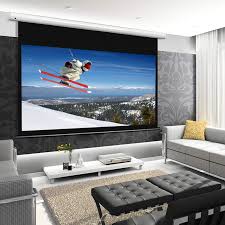The Evolution of Screens: From Cathode Ray Tubes to OLED Displays
Over the years, screens have undergone a remarkable transformation, evolving from bulky cathode ray tubes to sleek OLED displays that offer stunning visuals. This evolution has revolutionised how we interact with technology and consume media.
Cathode Ray Tubes (CRT)
The era of cathode ray tubes marked the beginning of screen technology. These bulky glass tubes were used in early televisions and computer monitors. While CRT screens were revolutionary for their time, they were heavy, consumed a lot of power, and had limited resolution.
Liquid Crystal Displays (LCD)
With the advent of LCD screens, technology took a significant leap forward. LCDs offered slimmer profiles, better energy efficiency, and higher resolutions compared to CRTs. These screens became ubiquitous in laptops, TVs, and smartphones.
Light-Emitting Diode Displays (LED)
LED displays further improved upon LCD technology by incorporating light-emitting diodes for backlighting. This innovation resulted in better contrast ratios, improved colour accuracy, and enhanced energy efficiency. LED screens are now commonly used in TVs and digital signage.
Organic Light-Emitting Diode Displays (OLED)
OLED displays represent the pinnacle of screen technology. These screens feature self-emitting pixels that produce vibrant colours and deep blacks without the need for backlighting. OLED displays offer superior contrast ratios, wider viewing angles, and faster response times compared to LED screens.
As technology continues to advance, we can expect further innovations in screen technology. From flexible displays to transparent screens, the future of screens holds endless possibilities that will continue to redefine how we engage with visual content.
Top 9 Frequently Asked Questions About Screens: Answers and Insights
- What is the difference between LCD and LED screens?
- How do I clean my computer screen without damaging it?
- What is the best resolution for a TV screen?
- Are OLED screens better than LCD screens?
- How can I reduce eye strain from looking at screens for too long?
- Do screen protectors really help prevent scratches on smartphones?
- What are the benefits of curved screens on TVs and monitors?
- Can I connect multiple monitors to my computer or laptop?
- Are blue light filters on screens effective in reducing eye strain?
What is the difference between LCD and LED screens?
When comparing LCD and LED screens, the main difference lies in the backlighting technology used. LCD screens rely on a fluorescent backlight to illuminate the display, while LED screens utilise light-emitting diodes for backlighting. LED screens typically offer better energy efficiency, improved contrast ratios, and enhanced colour accuracy compared to traditional LCD screens. LED technology also allows for thinner screen designs and better performance in terms of brightness and uniformity. Ultimately, the choice between LCD and LED screens depends on factors such as budget, desired features, and viewing preferences.
How do I clean my computer screen without damaging it?
When it comes to cleaning your computer screen, it’s essential to use gentle and safe methods to avoid causing damage. Start by powering off the screen and unplugging it to prevent any electrical mishaps. Use a soft, microfiber cloth to gently wipe away dust and smudges in a circular motion. Avoid using harsh chemicals or abrasive materials, as they can scratch the screen or strip off its protective coating. If needed, lightly dampen the cloth with distilled water or a mild screen-cleaning solution specifically designed for electronic devices. Remember to never spray liquid directly onto the screen, as it can seep into the edges and cause internal damage. With proper care and attention, you can keep your computer screen looking clean and pristine without risking any harm.
What is the best resolution for a TV screen?
When it comes to determining the best resolution for a TV screen, several factors come into play. The ideal resolution largely depends on the size of the TV and how far you typically sit from it. For larger screens or if you sit closer, a higher resolution such as 4K (3840 x 2160 pixels) or even 8K (7680 x 4320 pixels) can provide sharper details and more immersive viewing experience. However, for smaller screens or viewing from a distance, a Full HD resolution (1920 x 1080 pixels) may suffice without compromising picture quality. Ultimately, the best resolution for a TV screen is subjective and varies based on individual preferences and viewing habits.
Are OLED screens better than LCD screens?
When comparing OLED screens to LCD screens, the debate often centres around the superior picture quality of OLED displays. OLED screens are known for their ability to produce deeper blacks, vibrant colours, and better contrast ratios due to their self-emitting pixel technology. This results in a more immersive viewing experience with sharper details and richer colours. On the other hand, LCD screens rely on backlighting, which can lead to issues like light bleed and limited viewing angles. While OLED screens generally outperform LCD screens in terms of visual quality, factors such as cost and longevity also play a role in determining which type of screen is better suited for individual needs and preferences.
How can I reduce eye strain from looking at screens for too long?
To reduce eye strain from looking at screens for extended periods, it is essential to follow some simple practices. Firstly, ensure that your screen is positioned at eye level and about an arm’s length away from you. Adjust the brightness and contrast settings to a comfortable level, and consider using a blue light filter to reduce the strain on your eyes. Take regular breaks by following the 20-20-20 rule – every 20 minutes, look at something 20 feet away for at least 20 seconds to give your eyes a rest. Additionally, remember to blink frequently to keep your eyes moist and reduce dryness. Implementing these habits can help alleviate eye strain and promote healthier screen viewing habits in the long run.
Do screen protectors really help prevent scratches on smartphones?
Screen protectors are a popular accessory for smartphones, often touted as a solution to prevent scratches on device screens. While opinions vary, many users find that screen protectors can indeed help safeguard their smartphones from scratches. By adding an extra layer of protection over the screen, screen protectors can act as a sacrificial barrier, absorbing minor impacts and scratches that would otherwise damage the display. However, it is important to note that the effectiveness of screen protectors may vary depending on the quality of the protector and the type of scratch it encounters. Ultimately, using a screen protector can be a proactive measure to maintain the pristine condition of your smartphone’s screen.
What are the benefits of curved screens on TVs and monitors?
Curved screens on TVs and monitors offer several benefits that enhance the viewing experience. One key advantage is improved immersion, as the curved design helps to wrap the viewer’s peripheral vision, creating a more engaging and cinematic feel. Curved screens also reduce glare and reflections, providing a more uniform viewing experience from various angles. Additionally, the curvature can help to reduce eye strain by minimising distortion and maintaining a consistent focal distance across the screen. Overall, curved screens can add a touch of elegance to any space while delivering a more immersive and comfortable viewing experience for users.
Can I connect multiple monitors to my computer or laptop?
Yes, you can connect multiple monitors to your computer or laptop, depending on the available ports and graphics capabilities of your device. Most modern computers and laptops come equipped with multiple display outputs, such as HDMI, DisplayPort, DVI, or VGA. By connecting additional monitors to these ports, you can extend your desktop workspace, making multitasking more efficient and enhancing productivity. Some operating systems also offer built-in tools for managing multiple displays, allowing you to customise screen arrangement and resolution settings to suit your preferences. Whether for work or entertainment purposes, connecting multiple monitors can provide a seamless and immersive computing experience.
Are blue light filters on screens effective in reducing eye strain?
Blue light filters on screens are a popular feature designed to reduce eye strain caused by prolonged exposure to digital devices. While the effectiveness of blue light filters in alleviating eye strain is a subject of debate among experts, many users report experiencing reduced discomfort and improved sleep quality after using these filters. Blue light filters work by reducing the amount of high-energy blue light emitted by screens, which is known to disrupt the body’s natural sleep-wake cycle. However, it is important to note that individual experiences may vary, and some users may not notice a significant difference in eye strain relief with blue light filters. To maximise the benefits of these filters, it is recommended to combine their use with other eye care practices, such as taking regular breaks and adjusting screen brightness levels.



